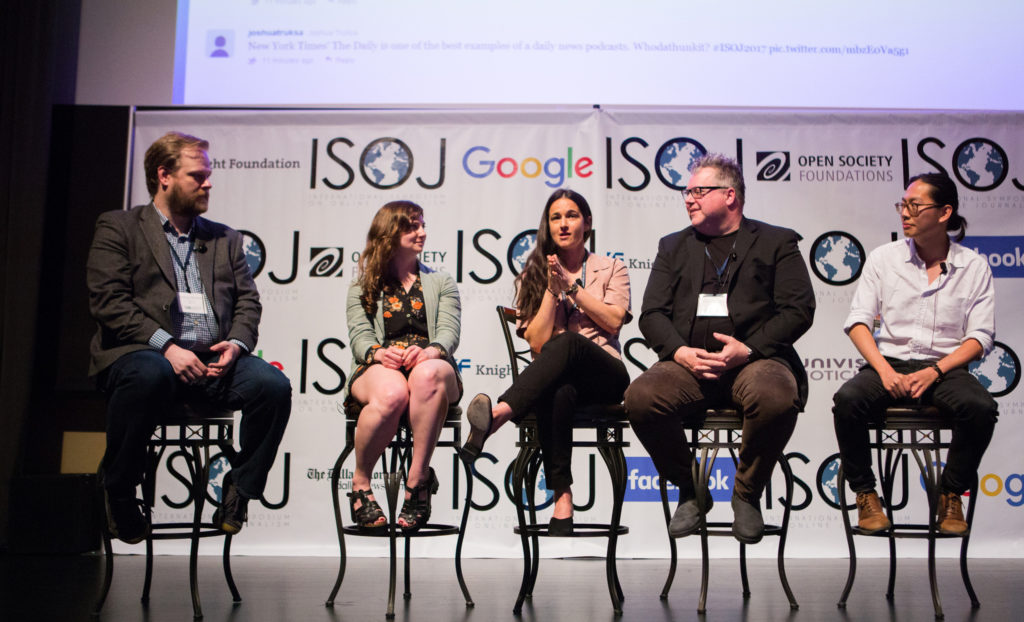April 26, 2017 | Podcasting
Podcasts can positively transform the way the audience interacts with media
Watch video of the podcast panel discussion from ISOJ 2017.
Although podcasts have been used for a little more than ten years, both by various digital platforms and by the news media, but mainly by the radio – its narrative prestige in journalism is fairly recent.
In journalism, for a podcast to convey the message and move the audience, it must have original content. That was one of the main conclusions of the panel “The Podcast Boom: Prospects for news organizations,” on the second day of the 18th International Online Journalism Symposium (ISOJ), on April 22 at the Blanton Museum of Art, on the campus of the University of Texas at Austin.

Podcasts “bring an understanding to a story in audio that (…) is really difficult to accomplish in print, which is a truly human relationship with what’s going on, to the news,” said panelist Lisa Tobin, executive producer of The Daily, a daily news podcast published Monday to Friday by The New York Times.
Tobin was joined by Andrea Silenzi, host and producer of podcast Why Oh Why and former producer of Slate’s podcast The Gist; Eric Nuzum, senior vice president of original content development for Audible, Amazon; Nicholas Quah, founder and author of the Hot Pod podcast newsletter; and Joshua Benton, director of Nieman Lab of Journalism at Harvard, as moderator.
Listening to The Times’s podcast is becoming a daily habit for many people, Tobin said. Just two months after its launch in February 2017, it has 20 million listeners, the producer said.
The Times has succeeded with this 20-minute daily news podcast, which is narrated by its own journalists, to capture the youngest audience of all its products.
This new form of “narrative news” present in podcasts is transforming the way The Times is interacting with its audience, Tobin said. Consequently, it is also transforming the relationship of the audience with journalists, journalism and, finally, also with The Times as a media outlet, according to its producer.
Nuzum said that for a news podcast to catch the attention of the audience, it must: offer a compelling story idea, present engaging characters and provide a unique voice.
In that sense, Nuzum said, what The Times is doing with The Daily, introducing the daily news into a podcast, is breaking the mold and going much further.
In 2006, National Public Radio (NPR) began to put its radio programs into a podcast, said Nuzum, former vice president for programming at the public radio. However, since NPR started producing original content for podcasts, it doubled its audience.
“News is not inherently interesting. Having a story to tell is not as important as the way you tell it,” Nuzum said.
Silenzi, the former producer of The Gist which was created in May 2014, said that to make a successful and attractive news podcast, one of the most important things to consider is the production of a unique format. And concerning that original format, it must be innovated, and reformulated constantly. “It’s a creative challenge every day,” Silenzi said.
About the podcast itself, the founder of Hot Pod said that it is definitely a space that is outside radio. The added value of using the podcast, compared to radio, is that it allows you to give the audience a particular editorial experience with sound.
The podcast surpasses the level of intimacy offered by traditional radio broacasting, Nuzum emphasized.
To watch video of this panel and all others at ISOJ, visit Facebook or YouTube. Video will be posted to isoj.org shortly.

